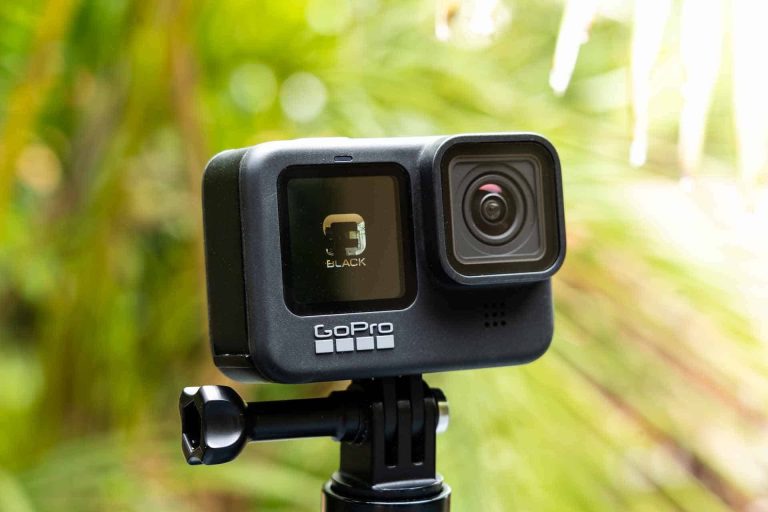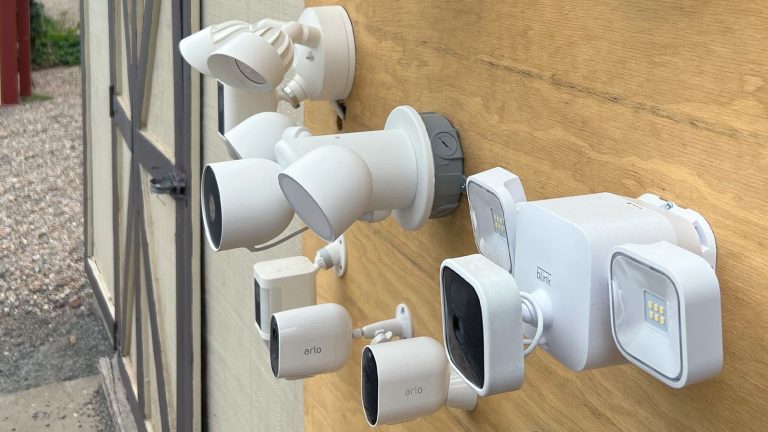Top 10 Best Telescopes 2024
Join the numerous customers who have relied on Consumers Voice to help them make smarter purchasing decisions. Our experts will assist you in selecting the best one for your requirements. Find the ideal Telescopes for you with the aid of our unbiased professional evaluations and data-driven buying suggestions.
Gskyer Telescope 600x90mm AZ Astronomical Refractor Telescope
- The 600mm(f/6.7) focal length and 90mm aperture, fully coated optics glass lens with high transmission coatings creates stunning images.
- Come with three replaceable eyepieces(24X, 60X,120X) and one 3x Barlow lens.
- 3x Barlow lens trebles the magnifying power of each eyepiece.
- This telescope allows for many different viewing positions with a adjustable aluminum tripod.
- No tools are required for reflecting telescope even for the novice, quick and easy to focus.
Telescope 90mm Aperture 900mm - Vertisteel AZ Mount Base
- This telescope features a 90mm aperture and 900mm focal length refracting design.
- The Free-Stop non-polar shaft - Follow-up and stop design, allowing the lens to move smoothly with high precision.
- This telescope not only includes an Digital eyepiece, but also a phone adapter and wireless remote.
- You can easily capture and share images and videos of your observations on your phone without physically touching the telescope.
- With a compact design, this telescope is easy to carry and set up, allowing you to observe deep space.
Telescope 80mm Aperture 600mm - Astronomical Portable Refracting
- This telescope is 600mm(f/6.7) focal length and 80mm aperture, 80mm aperture to capture more light picture.
- Multi-fully high transmission coated all-optical lens enhance image brightness and clarity.
- Our telescope for kids and adults is quipped with two replaceable excellent-quality eyepieces.
- 3x Barlow lens trebles the magnifying power of each eyepiece. magnificate moon up to 72 or 180 times.
- Comes with a phone adapter and an adjustable aluminum tripod. Wireless remote control.
Telescope 150EQ Astronomical Reflector Telescopes for Adults
- Dianfan 150EQ reflector telescope is 150mm aperture and 650mm focal length.
- Its large aperture provides excellent light-gathering power, ensuring exceptional image quality.
- New german equatorial with dial and slow motion cables.
- It features fully-coated glass optics, a full-height tripod, 2 high-quality eyepieces.
- A 2x Barlow Lens and a red dot finderscope,a detailed illustrated instructions,a new phone adapter and moon filter.
Celestron - NexStar 8SE Telescope - Computerized Telescope
- The nexstar 8se computerized telescope features celestron’s iconic orange tube design with updated technology.
- The 8-inch primary mirror in this schmidt-cassegrain telescope for adults and kids to be used together.
- Featuring a database of more than 40,000 celestial objects, the go to mount built into our telescopes for astronomy.
- The single fork arm design and sturdy steel tripod all assemble and break down from separate components for easy transportation.
- Skyalign technology gets your telescope aligned and ready in minutes.
MEEZAA Telescope, 150EQ Reflector Telescope for Adults Astronomy Beginners
- The reflector telescope is a 650mm focal length and 150mm aperture to capture more light pictures.
- 2X Barlow lens to double the power of each eyepiece.
- Magnificate moon up to 52X or 130X. With a red dot, the finderscope makes locating objects easy.
- Meezaa reflector telescope features a manual german equatorial mount with 2 cables slow motion Knobs for smooth.
- The telescope comes with a high-quality large diameter adjustable stainless steel tripod. help you in 24 hours.
Telescope, Gskyer 130EQ Professional Astronomical Reflector Telescope
- This reflector telescope is a great choice for anyone interested in exploring the night sky.
- The telescope's short 24 inch long optical tube design and fast f/5 focal ratio, along with its toothless focusing base.
- The included 3 eyepieces, a 3X Barlow lens, a finderscope, and an adjustable tripod make it easy to find.
- There is no need to download app, the remote can be paired with your device via bluetooth.
- Compatible with iPhone or Android device. With the bluetooth camera remote.
CELESTRON StarSense Explorer DX 130AZ Smartphone App-Enabled Telescope
- Let your iPhone or Android phone take you on a guided tour of the night sky
- This one-of-a-kind telescope uses patented, award-winning StarSense sky recognition technology.
- View planets, brighter nebulae, galaxies, and star clusters from the city PLUS fainter, deep sky objects from darker sites.
- Manual altazimuth mount with smooth, dual-axis slow-motion controls makes it easy to follow the on-screen arrows to your desired target.
- The 5" primary mirror features highly reflective coatings and enough light gathering ability to view craters on the Moon.
Celestron - AstroMaster 130EQ Newtonian Telescope
- The Celestron AstroMaster 130EQ Newtonian reflector is ideal the telescope for beginners.
- It features fully-coated glass optics, a full-height tripod, 2 eyepieces, and a StarPointer red dot finderscope.
- With a large, 130mm aperture, the AstroMaster 130EQ can gather enough light to see our Solar System and beyond.
- This is a great telescope for kids and adults to use together. It features a manual German Equatorial mount for smooth and accurate pointing. Setup is quick and easy, with no tools required.
- We’ve included 2 eyepieces (20mm and 10mm), a full-height tripod, and a StarPointer red dot finderscope.
Telescope 130EQ Newtonian Reflector Telescopes for Adults
- Large aperture 130mm telescope, high resolution, good light collecting ability, imaging brighter, more suitable for the observation.
- The telescope adopts a sturdy and light fram structure, the carbon fiber was covering on the telescope surface, sophisticated technology.
- Objective lens features fully-coated glass optics, it can improve the optical system performance of astronomical telescopes.
- Precise positioning and fast tracking of celestial bodies make your observation more stable.
- The telescope comes with a high-quality large diameter adjustable aluminum alloy tripod.
Telescopes stand as powerful instruments that extend our vision beyond the confines of Earth, allowing us to explore distant galaxies, observe celestial objects, and unravel the mysteries of the cosmos. From backyard stargazing to professional astronomical research, telescopes come in various types and sizes, each offering unique capabilities to capture the wonders of the universe.
Types of Telescopes
- Refracting Telescopes:
- Design: Use lenses to gather and focus light, similar to how a magnifying glass works.
- Advantages: Offer crisp, high-contrast images suitable for planetary and lunar observations.
- Limitations: Limited in size due to lens weight and chromatic aberration (color distortion).
- Reflecting Telescopes:
- Design: Employ mirrors to gather and reflect light to a focus point, enhancing light collection.
- Advantages: Excellent for deep-sky observations, capturing faint objects with greater light-gathering ability.
- Examples: Newtonian, Cassegrain, and Dobsonian telescopes are popular types.
- Catadioptric Telescopes:
- Design: Combine lenses and mirrors to achieve a compact design with enhanced optical performance.
- Advantages: Versatile, offering both wide-field and high-magnification capabilities suitable for various astronomical targets.
- Examples: Schmidt-Cassegrain and Maksutov-Cassegrain telescopes.
Key Components of Telescopes
- Objective Lens or Primary Mirror: Collects light and forms an image at the focal plane.
- Eyepiece: Magnifies the image formed by the objective lens or primary mirror, allowing for detailed observation.
- Mount: Supports the telescope and enables precise tracking of celestial objects, essential for long-exposure photography.
- Focuser: Allows fine adjustment of the focus point to achieve sharp images of distant objects.
Applications of Telescopes
- Astronomy and Astrophotography: Explore planets, moons, stars, nebulae, and galaxies, capturing images of celestial phenomena.
- Education and Outreach: Introduce students and the public to astronomy through hands-on observation and learning experiences.
- Research and Scientific Discovery: Conduct astronomical research, discover new celestial objects, and study cosmic phenomena.
- Amateur Astronomy: Enjoy recreational stargazing, observing meteor showers, and tracking celestial events like eclipses and transits.
Choosing a Telescope
- Aperture Size: Larger apertures collect more light, enhancing image brightness and detail, crucial for observing faint objects.
- Focal Length and Magnification: Consider the telescope’s focal length and compatible eyepieces to achieve desired magnification levels for different targets.
- Portability and Mount Stability: Balance between portability for travel and stability for steady observation and astrophotography.
- Budget and Accessories: Evaluate additional accessories like filters, finderscopes, and camera adapters based on your interests and budget.
Care and Maintenance
- Storage: Store telescopes in a dry, dust-free environment to protect optics and mechanical components.
- Cleaning: Use a soft brush or compressed air to remove dust from lenses and mirrors; avoid touching optical surfaces to prevent scratches.
- Collimation: Regularly check and adjust the alignment of mirrors (reflectors) or lenses (refractors) for optimal image quality.
Conclusion
Telescopes serve as portals to the cosmos, offering breathtaking views of celestial wonders and expanding our understanding of the universe. Whether for amateur astronomy, scientific research, or educational purposes, telescopes provide invaluable tools for exploring the depths of space and inspiring curiosity about the cosmos. By selecting the right telescope and mastering its use and maintenance, enthusiasts and professionals alike can embark on a journey of discovery, uncovering the beauty and mysteries that lie beyond our planet’s atmosphere.

















